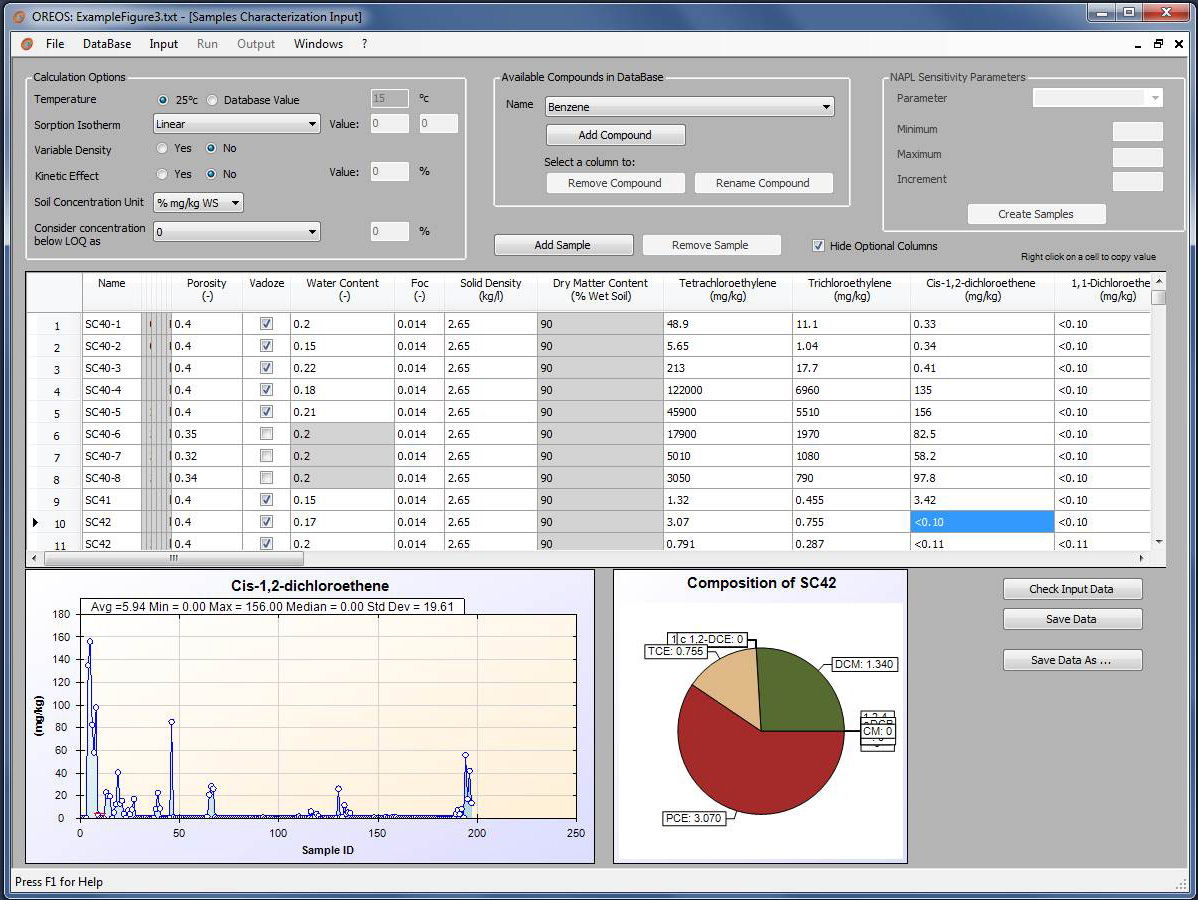When dealing with a site contaminated with organic pollutants (such as hydrocarbons, chlorinated solvents…), the characterisation of the source zone (i.e. the volume of aquifer containing a non-aqueous phase liquid, i.e. NAPL) is of great importance as its geometry, its composition and its volume drive the long term spatial and temporal evolution of the contaminant plumes in groundwater and in the soil gas phase.
The characterisation assessment step mainly consists in measuring and analysing contaminant concentrations of soil samples but the interpretation of laboratory analysis is not straight forward. Threshold values are not widely available for soil concentrations and the behavior of organic contaminants is complex as they can be present in several phases of the soil (water, soil gas, solid and NAPL). Therefore, BURGEAP developed an application, OREOS® 1.0, to help you gain a clearer understanding of the distribution of contaminants in soils and their potential behavior. OREOS®’s design was part of a Research and Development project co-financed by ADEME (the French Environment and Energy Management Agency) through the INNOV’R® program. It benefited from the scientific support of Institut de Mécanique des Fluides de Toulouse (CNRS/INPT/UPS).
OREOS® computes the pollution distribution between the different phases of the soil sample (water, gas, solid, NAPL) based on the soil concentration of contaminants, the petrophysical properties of the soil (porosity, water and organic carbon content) and the physical and chemical properties of the contaminants (molar weight, liquid density, solubility, vapor pressure, water-organic carbon distribution coefficient).
For each soil sample, OREOS® permits:
This information is precious in the framework of contaminated site studies (such as site assessment and health risk assessment studies) as well as in remediation studies (choice of the remediation techniques and cost-benefit analysis).
Save time in studies on soil contamination with large datasets
Assess the uncertainties through a sensitive analysis module
Get accurate results thanks to advanced physical processes
